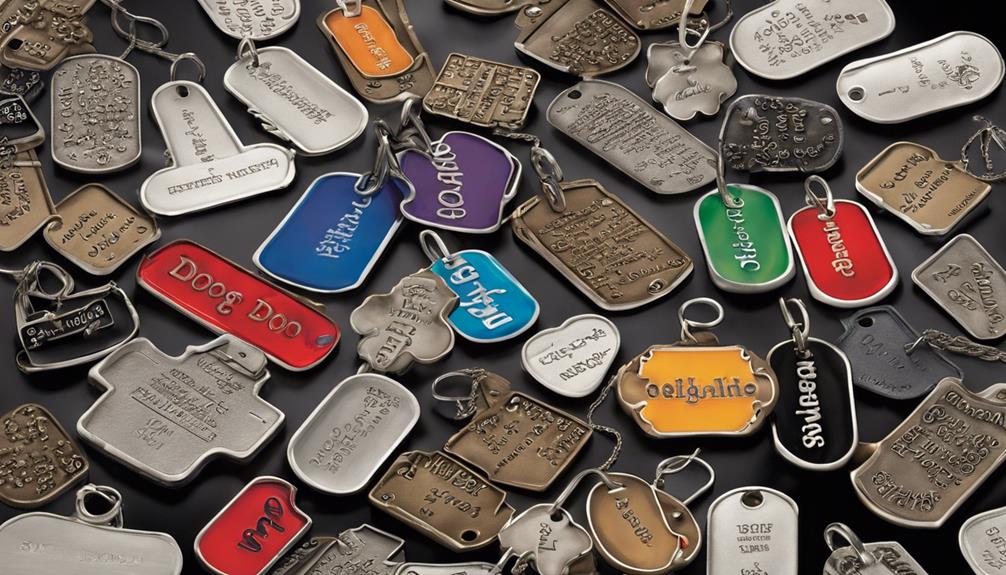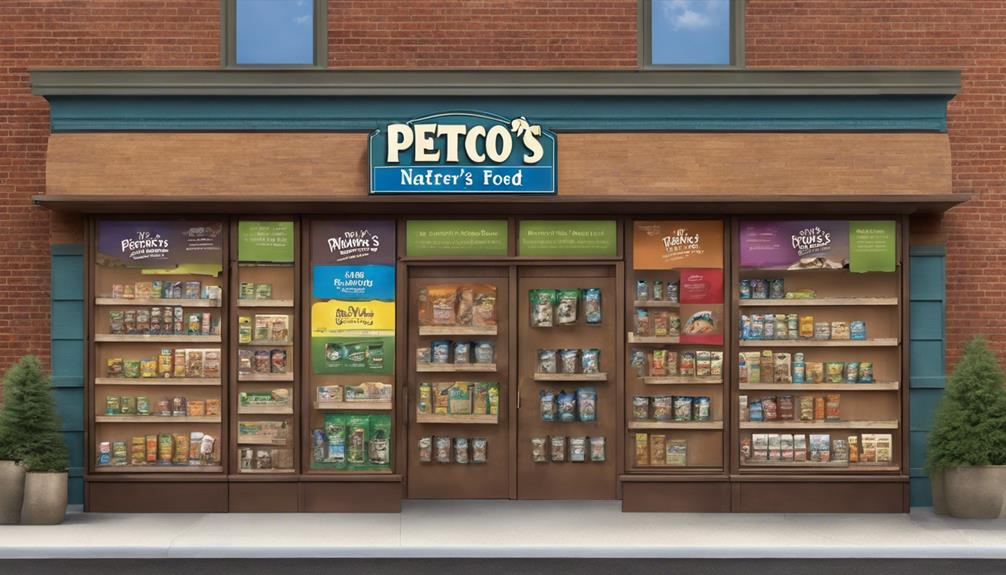Did you know that *nearly 60% of dog owners* prefer dry dog food over wet dog food? This preference often stems from perceptions of *convenience*, *cost-effectiveness*, and the belief that it offers adequate *dog nutrition*. However, understanding the impact of these two types of diets on your pet’s overall health is essential for making informed choices. In this article, we’ll delve into the differences between wet and dry dog food, revealing how each option influences your furry friend’s nutrition, well-being, and overall quality of life. By exploring this dog diet comparison, you’ll gain insights that can help enhance your pet’s health and happiness.
Key Takeaways
- Understanding pet health starts with knowing your dog’s dietary needs.
- Wet dog food can enhance hydration and appeal to picky eaters.
- Dry dog food is often more economical and easier to store.
- A balanced diet is crucial for your dog’s overall health.
- Each type of food has its own unique benefits and drawbacks.
- Choosing the right food may depend on specific health needs or preferences.
Overview of Dog Nutrition
Understanding the fundamental components of dog nutrition is essential for keeping your furry friend healthy and happy. A balanced diet plays a significant role in your dog’s overall well-being. This diet must comprise various essential nutrients such as protein, fats, carbohydrates, vitamins, and minerals to support growth, maintain energy levels, and bolster the immune system.
Understanding Essential Nutrients for Dogs
Proteins serve as the building blocks of your dog’s body, essential for muscle development and repair. High-quality protein sources like chicken, beef, or fish contribute to healthy growth and energy. Alongside protein, fats offer necessary energy and promote skin and coat health. Carbohydrates provide additional energy, while essential vitamins and minerals support various bodily functions and aid in the absorption of other nutrients.
Importance of Balanced Diets
A balanced diet ensures your dog receives all the necessary nutrients for optimal health. This comprehensive approach to dog nutrition can help prevent health issues and maintain longevity. The right mix of protein and vitamins not only influences your dog’s physical condition but also strengthens the immune system, making it more resilient against diseases. Prioritizing a well-rounded meal plan becomes vital for any responsible pet owner aiming for their dog’s optimal health.

Benefits of Wet Dog Food
Choosing wet dog food can offer numerous benefits for your furry friend. This type of diet can play a significant role in maintaining your dog’s overall health and happiness. Wet dog food provides advantages that enhance hydration and skin health, making it a popular choice among pet owners.
Hydration and Skin Health
One of the primary wet dog food benefits lies in its moisture content. Hydration is essential for your dog’s well-being, especially if they do not drink enough water throughout the day. Incorporating wet food into your dog’s diet can improve their overall hydration levels significantly. This hydration promotes skin health, preventing dryness and flakiness while helping to maintain a shiny coat.
Palatability and Appetite Stimulation
Wet dog food is known for being tasty dog food. Its rich flavors and tempting aromas encourage dogs to eat, particularly those with reduced appetite or specific health conditions. Many dogs prefer the texture of wet food, finding it more satisfying than dry alternatives. This can be particularly beneficial for picky eaters or older dogs who might struggle with consistency in their diet.

Advantages of Dry Dog Food
When considering the nutritional needs of your furry friend, understanding the advantages of dry dog food plays a key role. Dry food is known for its practicality and cost-effectiveness. It offers several benefits that make it a popular choice among pet owners.
Cost-Effectiveness and Convenience
One of the most significant dry dog food advantages is its affordability. Compared to wet food, dry dog food delivers a more budget-friendly option for pet owners. This cost-effective dog food allows you to maintain your pet’s diet without overspending. Additionally, dry dog food boasts convenience in terms of storage and serving. Its longer shelf life means you can buy in bulk, reducing trips to the store. When it comes to feeding time, dry food is less messy, simplifying the process for you.
Dental Health Benefits
Beyond cost, dry dog food contributes positively to your dog’s dental health. The texture of dry kibble works to mechanically clean your pet’s teeth as they chew. This action helps to minimize plaque and tartar buildup, promoting better oral hygiene. Maintaining your dog’s dental health is essential, as it can prevent potential health issues down the line. By choosing dry dog food, you’re not just opting for convenience; you are also supporting your dog’s overall health.

| Feature | Dry Dog Food | Wet Dog Food |
|---|---|---|
| Cost | More affordable | Generally higher |
| Shelf Life | Longer shelf life | Shorter shelf life |
| Feeding Convenience | Less mess | Messier, requires refrigeration |
| Dental Health | Helps reduce plaque | No significant benefit |
How does wet food vs dry food affect a dog
Choosing between wet food and dry food can significantly influence your dog’s overall well-being. Understanding how these options impact your dog’s digestive health and weight management provides valuable insights for making informed decisions about their diet.
Impact on Digestive Health
Wet food typically contains higher moisture levels compared to dry food, which can lead to softer stools for dogs. This increased hydration may positively affect your dog’s digestive health, ensuring they remain well-hydrated. On the other hand, dry food promotes firmer stools due to its lower moisture content. The texture and composition of each food type also play a role in how your dog’s digestive system processes nutrients.
Weight Management Considerations
When considering weight management, the calorie density of wet food versus dry food is crucial. Wet food often contains fewer calories, which can aid in controlling weight for dogs prone to obesity. This is an important factor for pet owners who want to maintain a healthy dog diet. Dry food can, in some cases, be more calorie-dense, potentially leading to weight gain if portions are not monitored carefully. Understanding these dog diet effects makes it easier to choose the right option for your furry friend.

| Food Type | Moisture Content | Calorie Density | Digestive Health | Weight Management |
|---|---|---|---|---|
| Wet Food | High | Lower | Softer stools | Supports weight loss |
| Dry Food | Low | Higher | Firm stools | Potential for weight gain |
Market Trends in Dog Food
The dog food market continues to evolve, reflecting changes in consumer behavior and preferences. Currently, there is a significant shift towards premium pet foods, which offer higher quality ingredients and tailored nutrition. This trend reflects the increasing awareness among pet owners regarding the importance of providing their dogs with healthy, nutritious options.
Growing Demand for Premium Pet Foods
The demand for premium pet foods has surged as more consumers recognize the benefits of investing in quality dog food. Brands like Blue Buffalo and Wellness have reported higher sales due to their focus on natural ingredients and specialized formulas. Pet owners want assurance that their dogs receive the best nutrition, prompting many to opt for more expensive, high-quality options.
Consumer Preferences Shifting Towards Quality
You might notice a shift in product offerings as companies adapt to meet the needs of discerning consumers. Transparency in sourcing and ingredient quality has become paramount. Many brands now highlight their commitment to using ethically sourced ingredients. As you explore the dog food aisle, look for products that clearly articulate their benefits and sourcing practices. This focus on quality not only enhances pet lifestyles, but also creates a competitive atmosphere among brands striving to stand out in the crowded market.

Special Dietary Needs and Considerations
When it comes to choosing the best food for your dog, understanding their special dietary needs is crucial. Many dogs face challenges such as dog allergies and food sensitivities that necessitate careful consideration of what goes into their bowls. Different dogs have unique reactions to certain ingredients, which can dictate whether wet or dry food is more suitable. It’s essential to pay close attention to food labels and consult with your veterinarian to create the optimal diet plan.
Allergies and Food Sensitivities
Dog allergies and food sensitivities can manifest in various ways, ranging from skin irritation to digestive issues. Identifying these problems often requires a process of elimination. You might consider options like limited-ingredient diets or hypoallergenic dog food to see what suits your pet best. Ingredients such as chicken, beef, and grains are common allergens, and finding alternatives is key to your dog’s health and comfort.
Age-Related Nutritional Requirements
As your dog ages, their nutritional requirements shift significantly. Senior dog nutrition becomes increasingly important, with specific formulations designed to support their changing needs. Nutrient-dense foods can help maintain muscle mass and overall vitality. Puppies and adults also have distinct dietary requirements. Puppies require more protein and energy to support growth, while adult dogs may need a more balanced approach to maintain their health.

Homemade vs Store-bought Dog Food
Choosing between homemade dog food and store-bought options presents a variety of factors to consider. Each alternative has its own set of advantages and disadvantages, catering to different lifestyles and preferences. Understanding these pros and cons helps you navigate your choices more effectively.
Pros and Cons of Homemade Diets
Homemade dog food allows you full control over the ingredients, ensuring your pet receives fresh and high-quality nourishment. You can adjust recipes based on your dog’s specific nutritional needs and preferences. This flexibility can lead to improved health outcomes, particularly for dogs with sensitivities or allergies.
On the flip side, creating homemade dog food can be time-consuming and may require careful planning to ensure complete nutritional balance. Additionally, homemade diets may lack certain nutrients unless well-researched and monitored, potentially leading to deficiencies if not managed properly.
Refreshing Trends in Pet Food Formulation
The market for store-bought dog food is evolving, with numerous brands now focusing on natural and organic ingredients. Many dog owners seek transparency in ingredient sourcing, leading companies to adopt cleaner formulations. Pet food brands are increasingly offering options that prioritize safety, nutrition, and quality.
Consumers want to make informed choices, which has driven innovation within the industry. New trends might include grain-free recipes or diets rich in protein sourced from sustainable practices. As you evaluate your options, balancing the convenience of store-bought dog food with the tailored solutions of homemade diets could lead you to the best choice for your furry friend.
| Homemade Dog Food | Store-bought Dog Food |
|---|---|
| Full control over ingredients | Convenient and quick to serve |
| Customizable for specific needs | Consistent nutritional profiles |
| Fresh ingredients | Variety of recipes and flavors |
| Time-consuming preparation | Potentially lower quality ingredients |
| Requires careful planning | Potential lack of ingredient transparency |

Expert Opinions and Recommendations
Understanding dog feeding practices is crucial for pet owners seeking to provide the best for their furry companions. Insights from veterinarians often guide these decisions, focusing on nutritional needs and the importance of choosing the right food based on individual health conditions. Conversations with experts reveal the significance of tailored diets that align with your dog’s lifestyle.
Veterinary Insights on Feeding Practices
Veterinarians emphasize that different dogs may require specific dietary adjustments. Common recommendations include considering factors like age, allergies, and overall health. Your vet might suggest wet food for hydration or dry kibble for dental health. This veterinary advice serves as a cornerstone for informed pet feeding. Remember, each dog’s requirements can vary significantly, highlighting the need for personalized feeding strategies.
Pet Owners’ Perspectives on Wet and Dry Food
Pet owner opinions on wet versus dry food are diverse, influenced by convenience, cost, and their dog’s preferences. Many pet owners appreciate the versatility of wet food, as it often appeals more to picky eaters, while others turn to dry food for its affordability and ease of storage. Such experiences contribute to a broader understanding of dog feeding practices and underscore the importance of making choices that align with both expert guidance and personal observations. Balancing veterinary recommendations with real-life experiences ensures that you provide the best possible care for your beloved pet.

Conclusion
Understanding the differences between wet and dry food is essential for making informed pet diet choices that can significantly affect your dog’s health. Both types of food bring unique advantages to the table, and when combined thoughtfully, they can provide a well-rounded, balanced diet for your furry friend.
Your decision should hinge on your dog’s individual needs, preferences, and health factors. Some dogs thrive on the hydration benefits of wet food, while others may show improvements in dental health and cost-effectiveness with dry options. Evaluating these aspects closely can enhance the dog food impact on their overall well-being.
Ultimately, being well-informed allows you to optimize your dog’s nutrition, ensuring that every meal contributes positively to their health and happiness. Take the time to understand your choices in wet vs dry food, so you can feel confident in the decisions you make for your beloved pet.










